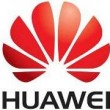

Cradlepoint, the provider in cloud-delivered 4G LTE network solutions that provide a pathway to 5G, announced a new subscription-based solution pricing model, the next step in its Elastic Edge™strategy for software-driven and cloud-delivered wireless wide-area networks (WANs). (more…)
January 19, 2018
Posted by: Zenobia Hegde

The possibilities offered by the Internet of Things (IoT) are growing strongly in Belgium and throughout the world. Orange Belgium decided last year to invest in new IoT technologies based on international standards, (more…)
December 11, 2017
Posted by: Zenobia Hegde

Microsemi Corporation, a provider of semiconductor solutions differentiated by power, security, reliability and performance, announced the availability of a new IEEE™ 1588 timing synchronisation module, offering a complete self-contained platform for customers to implement IEEE 1588 network timing client protocols. (more…)
November 29, 2017
Posted by: Zenobia Hegde

Calix, Inc. announced it has accelerated past the 100 service provider deployment milestone for its AXOS Gfast solutions faster than any other vendor. Armed with Calix AXOS Gfast solutions, which simplify the delivery of new services, service providers globally are cost-effectively upgrading their offerings to a true symmetrical gigabit experience (more…)
November 17, 2017
Posted by: Zenobia Hegde

Cambridge Broadband Networks (CBNL), the provider of licensed point-to-multipoint (PMP) microwave and millimetre wave, has today announced the results of its ‘UK Enterprise Broadband Index’. The survey of 200 businesses, conducted by market research firm Mobilesquared, (more…)
November 2, 2017
Posted by: Zenobia Hegde

At Ultra-Broadband Forum 2017, David Wang, president of products & solutions, Huawei, launched the All-Intelligent Network. (more…)
October 23, 2017
Posted by: Avadhoot Patil

Annual shipments of smart electricity metres in Europe will grow by 71% in 2017 to reach 23.1 million units, according to a new research report from the M2M/IoT analyst firm Berg Insight. Growth is driven by accelerating deployments in France, Italy and the UK that coincide with the final phase of the nationwide rollout in Spain. (more…)
October 20, 2017
Posted by: Avadhoot Patil

The Internet of Things (IoT) is being hailed as the next big thing in the tech world. The way in which we live our day-to-day lives will change forever when all of our products and devices become ‘connected’ – that’s if we’re led to believe everything we see and hear. (more…)
October 2, 2017
Posted by: Jeremy Cowan

Sierra Wireless, the provider of fully integrated device-to-cloud solutions for the Internet of Things (IoT), announced the industry’s first global LTE-Advanced Pro cellular modules, enabling the world’s fastest IoT applications for mobile computing, networking, and industrial M2M. (more…)
September 28, 2017
Posted by: Avadhoot Patil

InfiNet Wireless, the provider in fixed broadband wireless connectivity, will showcase its cutting-edge Smart City solution portfolio at GITEX Technology Week 2017 in Dubai, 8-12 October. (more…)
September 26, 2017
Posted by: Avadhoot Patil